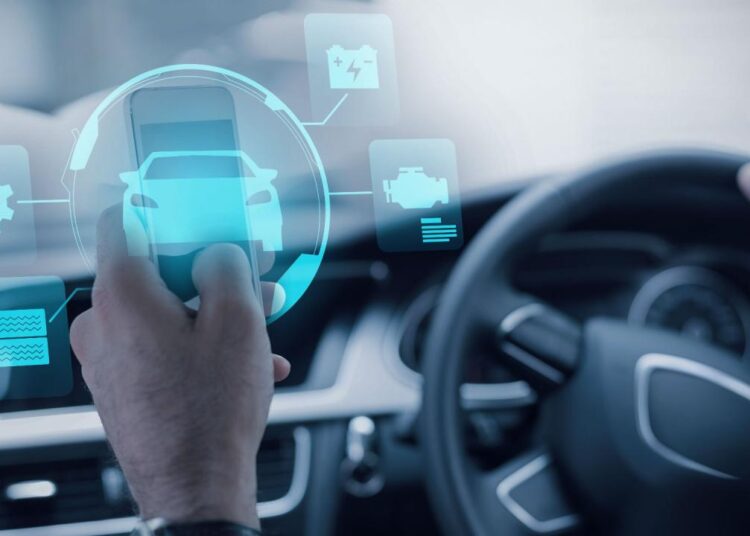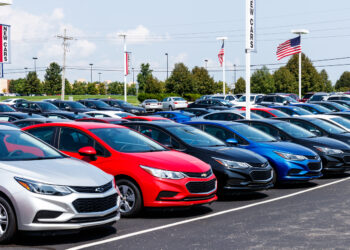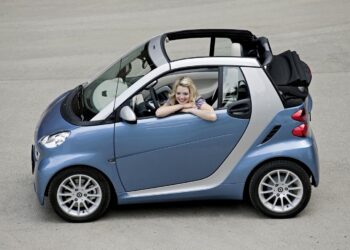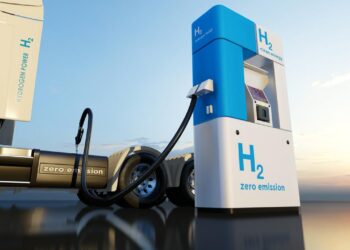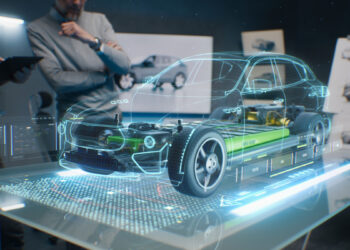What Drives the Connected Car Revolution?
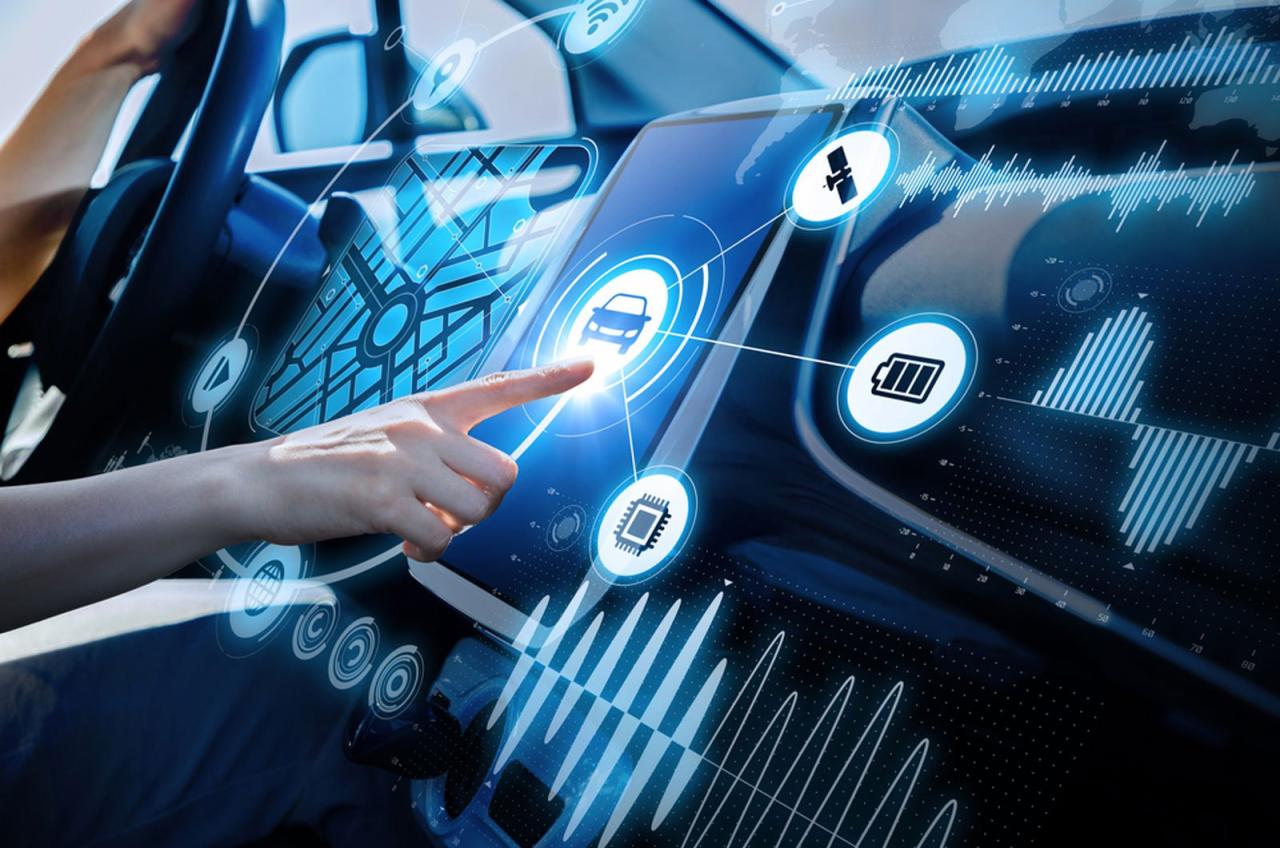
The emergence of the connected car is a confluence of rapid technological advancements, evolving consumer expectations, and a strategic push from automakers and tech companies alike. Understanding the fundamental components and capabilities is key to grasping the scale of this transformation.
A. Ubiquitous Connectivity
At the heart of the connected car is its ability to communicate. This connectivity comes in various forms, enabling a constant flow of data.
- Embedded Modems: Many modern cars come with built-in cellular modems (e.g., 4G LTE, increasingly 5G) that provide a direct connection to the internet, independent of a smartphone. This enables telematics services, over-the-air updates, and in-car Wi-Fi hotspots.
- Smartphone Integration: Technologies like Apple CarPlay and Android Auto seamlessly mirror smartphone interfaces onto the car’s infotainment screen, allowing access to navigation, music, and communication apps. Bluetooth connectivity is also standard for calls and audio streaming.
- Vehicle-to-Everything (V2X) Communication: This is a critical future-forward technology:
- V2V (Vehicle-to-Vehicle): Cars communicate directly with each other, exchanging data on speed, direction, braking, and potential hazards, enabling proactive safety warnings and collision avoidance.
- V2I (Vehicle-to-Infrastructure): Vehicles communicate with road infrastructure (traffic lights, road sensors, toll booths, parking garages), providing real-time data on traffic conditions, road closures, and optimizing traffic flow.
- V2P (Vehicle-to-Pedestrian/V2N – Vehicle-to-Network): Communication with pedestrians (via their smartphones or wearables) for safety warnings, and with broader networks for fleet management, cloud services, and urban planning.
- Cloud Computing: Vast amounts of data generated by connected cars are processed and stored in the cloud, enabling advanced analytics, remote diagnostics, and personalized services.
- High-Bandwidth Networks (5G): The rollout of 5G networks is crucial for low-latency, high-volume data transfer, which is essential for V2X communication, real-time mapping, and the future of autonomous driving.
This intricate web of connectivity forms the backbone of the connected car ecosystem.
B. Advanced Sensor Arrays
Connected cars are essentially highly sophisticated mobile sensing platforms, gathering an immense amount of data about their surroundings and internal state.
- Cameras: Provide visual data for object recognition (other vehicles, pedestrians, cyclists), lane keeping, traffic sign recognition, and 360-degree views for parking.
- Radar: Emits radio waves to detect the distance, speed, and angle of objects, performing well in adverse weather conditions. Crucial for adaptive cruise control and blind-spot monitoring.
- Lidar (Light Detection and Ranging): Uses lasers to create precise 3D maps of the environment, offering highly accurate distance measurements and detailed obstacle detection, especially vital for autonomous driving.
- Ultrasonic Sensors: Short-range sensors primarily used for parking assistance and detecting nearby obstacles at low speeds.
- GPS and High-Definition (HD) Mapping: Precise localization using GPS combined with highly detailed, frequently updated HD maps provides centimeter-level positioning crucial for navigation and autonomous functions.
- Inertial Measurement Units (IMUs): Consisting of accelerometers and gyroscopes, IMUs track the vehicle’s motion and orientation, complementing GPS data.
These sensors, working in concert, create a comprehensive real-time understanding of the vehicle’s environment.
C. Artificial Intelligence (AI) and Machine Learning (ML)
The raw data collected by sensors and connectivity technologies is made intelligent by AI and ML algorithms.
- Perception: AI algorithms process sensor data to identify, classify, and track objects in the vehicle’s surroundings (e.g., distinguishing between a car, a bicycle, and a pedestrian).
- Prediction: ML models analyze patterns of behavior from other road users to predict their likely actions, allowing the connected car to anticipate and react proactively.
- Decision-Making and Planning: AI systems use perceived data and predictions to make complex driving decisions, such as optimal routes, speed adjustments, lane changes, and evasive maneuvers, while adhering to traffic laws.
- Natural Language Processing (NLP): Enables intuitive voice control for infotainment, navigation, and vehicle functions, making interaction more seamless.
- Personalization: AI learns driver preferences (music, climate, driving style, common routes) to personalize the in-car experience and offer proactive assistance.
- Predictive Maintenance: ML analyzes vehicle performance data to predict potential component failures, allowing for proactive maintenance and reducing breakdowns.
AI is the brain that turns raw data into actionable intelligence, driving the smart capabilities of connected cars.
The Transformative Benefits
The integration of connectivity, sensors, and AI in vehicles yields a multitude of benefits, enhancing safety, convenience, and efficiency for drivers, passengers, and even urban ecosystems.
A. Enhanced Safety and Security
One of the most compelling promises of connected cars is a significant improvement in road safety and vehicle security.
- Collision Avoidance Systems: V2V communication allows vehicles to alert drivers (or autonomous systems) to potential collisions far beyond the line of sight, such as vehicles braking sharply around a blind turn.
- Real-time Hazard Warnings: Cars can receive immediate alerts about road hazards (e.g., black ice, debris, sudden traffic jams) from other connected vehicles or infrastructure.
- Emergency Call (eCall) Systems: In the event of a crash, connected cars can automatically alert emergency services with precise location data, significantly reducing response times.
- Stolen Vehicle Recovery: GPS tracking and remote immobilization features aid in locating and recovering stolen vehicles.
- Remote Diagnostics and Over-the-Air Updates: Manufacturers can remotely monitor vehicle health, diagnose issues, and push software updates to improve safety features or fix bugs, often before a driver even notices a problem.
- Driver Monitoring Systems: Cameras and sensors can detect driver fatigue or distraction, providing alerts to prevent accidents.
These safety enhancements have the potential to drastically reduce road fatalities and injuries.
B. Unprecedented Convenience and Personalization
Connected cars offer a level of convenience and customization that transforms the daily commute into a more enjoyable and productive experience.
- Seamless Navigation: Real-time traffic updates, predictive routing based on anticipated congestion, and dynamic rerouting to avoid delays. Integrated parking availability information can also save time.
- Personalized Infotainment: Access to streaming music, podcasts, audiobooks, and video services tailored to individual preferences. Cloud profiles ensure settings transfer across different connected vehicles.
- Voice Assistants: Natural language processing allows drivers to control vehicle functions, send messages, make calls, and search for information hands-free, minimizing distraction.
- Remote Vehicle Control: Smartphone apps allow owners to remotely lock/unlock doors, start/stop the engine, pre-condition the cabin climate, or even locate their car in a crowded parking lot.
- Integrated Payment Systems: Pay for fuel, parking, or tolls directly from the car’s infotainment system, streamlining transactions.
- Customizable User Interfaces: Digital dashboards and infotainment screens can be personalized to display preferred information and layouts.
- In-Car Wi-Fi Hotspot: Provides internet access for passengers’ devices, making travel more productive or entertaining.
These features contribute to a more tailored and less stressful driving experience.
C. Enhanced Efficiency and Reduced Costs
The data and intelligence of connected cars contribute to optimizing vehicle performance, fuel consumption, and operational efficiency.
- Optimized Routing: Real-time traffic data and predictive analytics help drivers (or autonomous systems) choose the most efficient routes, reducing fuel consumption and travel time.
- Predictive Maintenance: Monitoring vehicle health and predicting potential failures allows for proactive servicing, preventing major breakdowns, extending vehicle life, and reducing repair costs.
- Fuel/Energy Efficiency Coaching: Systems can provide real-time feedback to drivers on how to optimize their driving style for better fuel economy or EV range.
- Fleet Management: For commercial fleets, connected car data enables optimized routing, driver behavior monitoring, fuel efficiency tracking, and remote diagnostics, leading to significant operational savings.
- Reduced Idling: Smart traffic management systems, aided by V2I communication, can optimize traffic flow, reducing time spent idling in congestion.
- Insurance Savings: Data on safe driving habits can be used for usage-based insurance (UBI) models, potentially leading to lower premiums for careful drivers.
These efficiencies translate into both financial savings and a reduced environmental footprint.
D. New Business Models and Revenue Strams
The connected car revolution is not just changing vehicles; it’s creating entirely new industries and services.
- Mobility-as-a-Service (MaaS): Connected vehicles are integral to MaaS platforms, integrating ride-sharing, car-sharing, and other transport options into seamless, on-demand services.
- Data Monetization: Anonymized and aggregated vehicle data (e.g., traffic patterns, road conditions) can be valuable for urban planning, real estate, and advertising.
- Subscription Services: Revenue from in-car Wi-Fi, premium infotainment features, advanced navigation, and enhanced safety subscriptions.
- Over-the-Air (OTA) Updates: Manufacturers can deploy new features, performance enhancements, and software fixes remotely, creating new revenue opportunities and extending vehicle relevance.
- Automotive Cybersecurity Services: The growing complexity of connected cars creates a demand for specialized cybersecurity solutions.
- Personalized In-Car Commerce: Opportunities for targeted advertising, loyalty programs, and direct purchasing of goods and services from the vehicle.
- Smart City Integration: Connected cars become integral components of intelligent urban ecosystems, facilitating smart parking, dynamic traffic management, and emergency response coordination.
This creates a fertile ground for innovation and economic growth beyond traditional car sales.
The Roadblocks Ahead
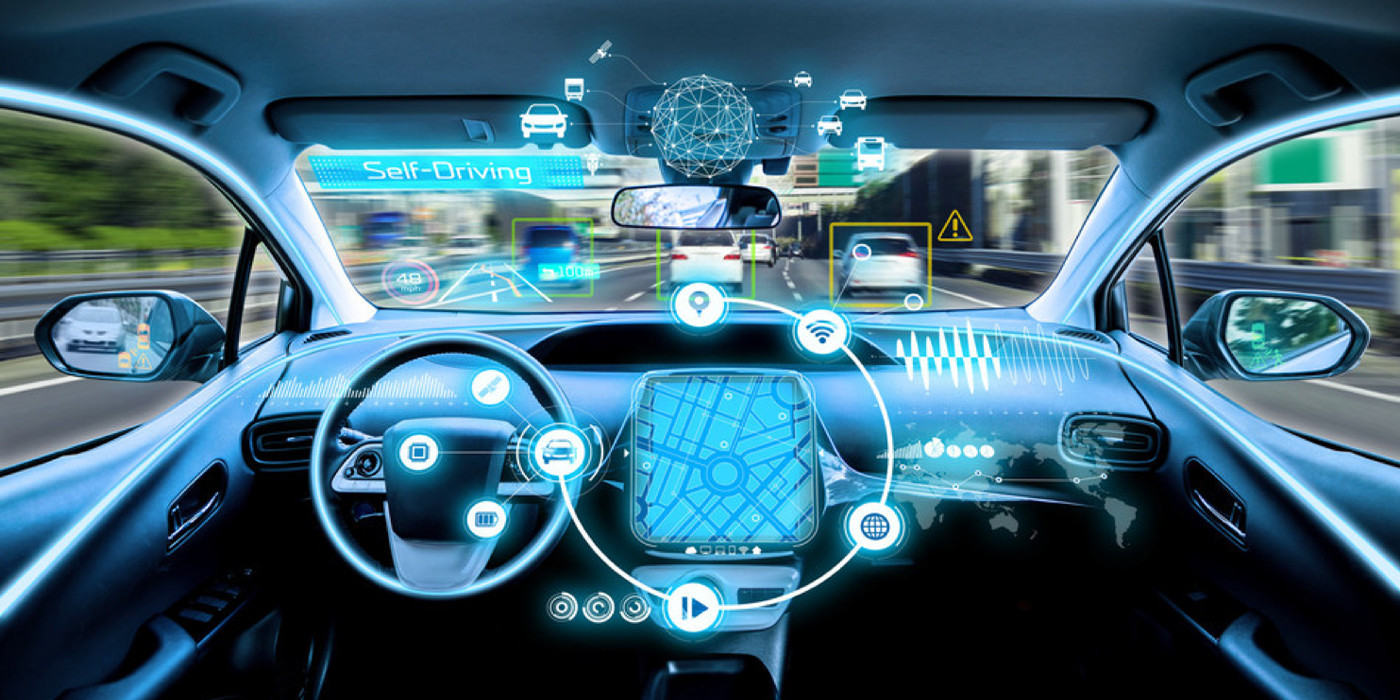
Despite the immense promise, the path to a fully connected and integrated automotive future is not without significant hurdles. Addressing these challenges is crucial for widespread adoption and consumer trust.
A. Cybersecurity Risks and Data Privacy
The extensive connectivity and data collection of connected cars present significant security and privacy concerns.
- Vulnerability to Hacking: Connected cars are essentially computers on wheels, making them potential targets for cyberattacks that could compromise vehicle control, personal data, or even safety.
- Data Breach Potential: The vast amounts of personal and driving data collected by connected cars are attractive targets for data breaches.
- Privacy Concerns: Questions arise about who owns the data generated by the vehicle, how it’s used, and whether it can be shared with third parties without explicit consent.
- Ransomware Attacks: The possibility of malicious actors locking drivers out of their vehicles or demanding payment.
- Authentication and Authorization: Ensuring only authorized users or systems can access and control vehicle functions.
Robust cybersecurity measures and clear data privacy regulations are paramount for building public trust.
B. Regulatory Frameworks and Legal Liability
Existing laws and regulations were not designed for highly connected and intelligent vehicles, creating legal complexities.
- Data Ownership and Sharing: Establishing clear rules on who owns the data generated by connected cars and how it can be shared, used, and monetized.
- Privacy Laws: Ensuring compliance with diverse global privacy regulations (e.g., GDPR, CCPA).
- Liability in Case of Malfunction: Determining who is liable if a connected feature (e.g., V2V communication, ADAS) contributes to an accident – the driver, manufacturer, software provider, or infrastructure operator?
- Cross-Border Regulations: Harmonizing regulations across different countries and regions to ensure seamless operation of connected vehicles globally.
- Cybersecurity Legislation: Developing specific laws to address cybersecurity threats unique to connected cars.
- Spectrum Allocation: Ensuring sufficient and clear radio spectrum for V2X communication without interference.
Governments worldwide are grappling with how to create adaptable and forward-looking legal frameworks.
C. Standardization and Interoperability
For a truly seamless connected car ecosystem, diverse technologies and manufacturers need to communicate effectively.
- Communication Protocols: Ensuring that different vehicles and infrastructure components can “speak the same language” (e.g., DSRC vs. C-V2X for V2V/V2I).
- Data Formats: Standardizing data formats for information exchange between vehicles, cloud platforms, and third-party services.
- Security Standards: Implementing common security protocols and encryption methods across the ecosystem.
- Hardware Compatibility: Ensuring that different components (sensors, modems) can integrate effectively within a vehicle and across different models.
- Global Harmonization: Achieving international consensus on technical standards to enable connected car services across borders.
Lack of common standards can lead to fragmentation, limiting the full potential of connected car technologies.
D. Cost of Technology and Accessibility
While benefits are clear, the advanced technology involved can increase vehicle costs, limiting accessibility for some.
- Upfront Cost: The integration of advanced sensors, processing units, and connectivity hardware adds to the manufacturing cost of vehicles.
- Subscription Fees: Many connected car features are offered as subscription services, adding to the long-term cost of ownership.
- Network Coverage: Reliable cellular network coverage is essential, and this can be an issue in rural or underserved areas.
- Digital Divide: Ensuring that the benefits of connected cars are accessible to all segments of society, not just the tech-savvy or affluent.
- Retrofitting Older Vehicles: The challenge of integrating connected features into the existing fleet of non-connected cars on the road.
Balancing technological advancement with affordability and accessibility is a critical challenge.
E. Public Acceptance and Trust
Building consumer confidence in complex, data-driven connected car features is paramount.
- Misconceptions: Addressing public misunderstanding about what connected car technology can and cannot do.
- Trust in Automation: For ADAS and future autonomous features, consumers need to trust the technology’s reliability and safety.
- Privacy Concerns: Overcoming public apprehension about vehicle data collection and potential misuse.
- System Reliability: Ensuring that connected car features are consistently reliable and don’t introduce new points of failure.
- User Experience: Designing intuitive and user-friendly interfaces that enhance rather than distract from the driving experience.
Public education and transparent communication are essential to fostering widespread acceptance.
What’s Next for Connected Cars
The Connected Car Revolution is still in its early stages, with immense potential for further evolution and integration into our daily lives.
A. Deeper Integration with Smart Cities
Connected cars will become integral components of broader smart city initiatives.
- Intelligent Traffic Management: Real-time data from connected vehicles will feed into adaptive traffic light systems, dynamic road signage, and congestion pricing schemes.
- Smart Parking: Vehicles can automatically find and reserve parking spots, guiding drivers directly to available spaces.
- Emergency Response Optimization: Real-time data on traffic and road conditions can help emergency services navigate more quickly and efficiently.
- Urban Planning Insights: Aggregated mobility data can inform urban planners about traffic patterns, infrastructure needs, and public transport demand.
- Environmental Monitoring: Vehicles can collect and share data on air quality, noise levels, and road surface conditions.
The car will be a key sensor and actuator within the urban fabric.
B. Evolution Towards Full Autonomy
Connected car technologies are foundational to the development and deployment of autonomous vehicles.
- V2X for Autonomous Driving: V2V and V2I communication will provide autonomous vehicles with a crucial “sixth sense,” seeing beyond obstacles and around corners, enhancing safety and decision-making.
- Cloud-Based AI and Mapping: Real-time updates to HD maps and AI algorithms will be delivered via cloud connectivity, ensuring autonomous systems are always operating with the latest information.
- Remote Assistance and Teleoperations: In complex “edge cases” where an autonomous vehicle might struggle, remote human operators could provide guidance via a connected link.
- Fleet Management for Robotaxis: Connected car technologies enable the efficient routing, dispatch, and maintenance of future autonomous ride-sharing fleets.
The connected car is the necessary precursor to widespread autonomous mobility.
C. Hyper-Personalization and In-Car Services
The vehicle will become an even more personalized and multi-functional space.
- Adaptive Interiors: Interiors that reconfigure based on driver or passenger preferences, mood, or activity (e.g., turning into a mobile office, entertainment lounge).
- Biometric Authentication: Vehicle access and personalized settings activated by facial recognition, fingerprint scans, or voiceprints.
- Context-Aware Services: The car anticipates needs based on calendar, location, and previous behavior (e.g., pre-ordering coffee on the route home, suggesting a charge stop).
- Augmented Reality (AR) Displays: Windshield-projected AR navigation, hazard warnings, and infotainment overlays that blend digital information with the physical world.
- Health and Wellness Monitoring: In-car sensors that monitor occupant vital signs, detect stress, or offer wellness programs.
- Seamless Digital Ecosystem: Deeper integration with smart home devices, personal assistants, and wearable technology.
The car will transform into a truly personalized, mobile extension of our digital lives.
D. New Business Models and Monetization Strategies
The data and connectivity will open up entirely new revenue streams for automakers and tech companies.
- Subscription Bundles: Comprehensive packages of connected services, including premium infotainment, advanced ADAS features, and personalized concierge services.
- On-Demand Features: Enabling drivers to activate and pay for features temporarily (e.g., a performance boost for a weekend, heated seats for a cold month).
- Targeted Advertising and Commerce: Delivering personalized ads and enabling direct purchases of goods and services based on location, preferences, and driving patterns (with privacy safeguards).
- Data-Driven Insurance: More granular usage-based insurance models that offer highly personalized premiums.
- Predictive Logistics and Supply Chain Services: Leveraging vehicle data to optimize commercial fleets and delivery services.
The economic landscape around the connected car will be dynamic and innovation-driven.
Conclusion
The Connected Car Revolution is fundamentally altering the DNA of the automotive industry, propelling us towards a future where vehicles are intelligent, communicative, and seamlessly integrated into our digital lives. From dramatically enhancing safety through V2V communication to providing unprecedented levels of convenience and personalization, the benefits are clear and compelling. While significant challenges remain in cybersecurity, regulation, and building public trust, the relentless pace of innovation and the strategic investments from global players signal an unstoppable momentum. The connected car is not just a technological advancement; it’s a foundational element for smart cities, autonomous mobility, and a more efficient, enjoyable, and sustainable transportation system. As our cars become smarter, they’re not just changing how we drive; they’re actively shaping the future of how we move and interact with the world around us. The road ahead is undoubtedly intelligent.

